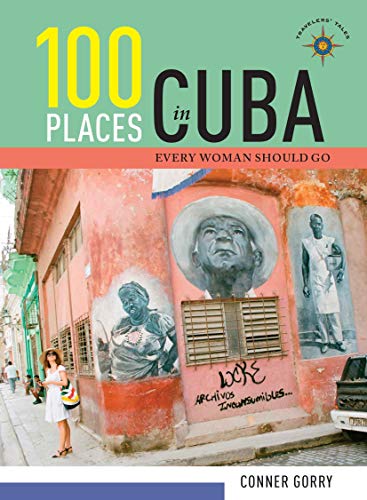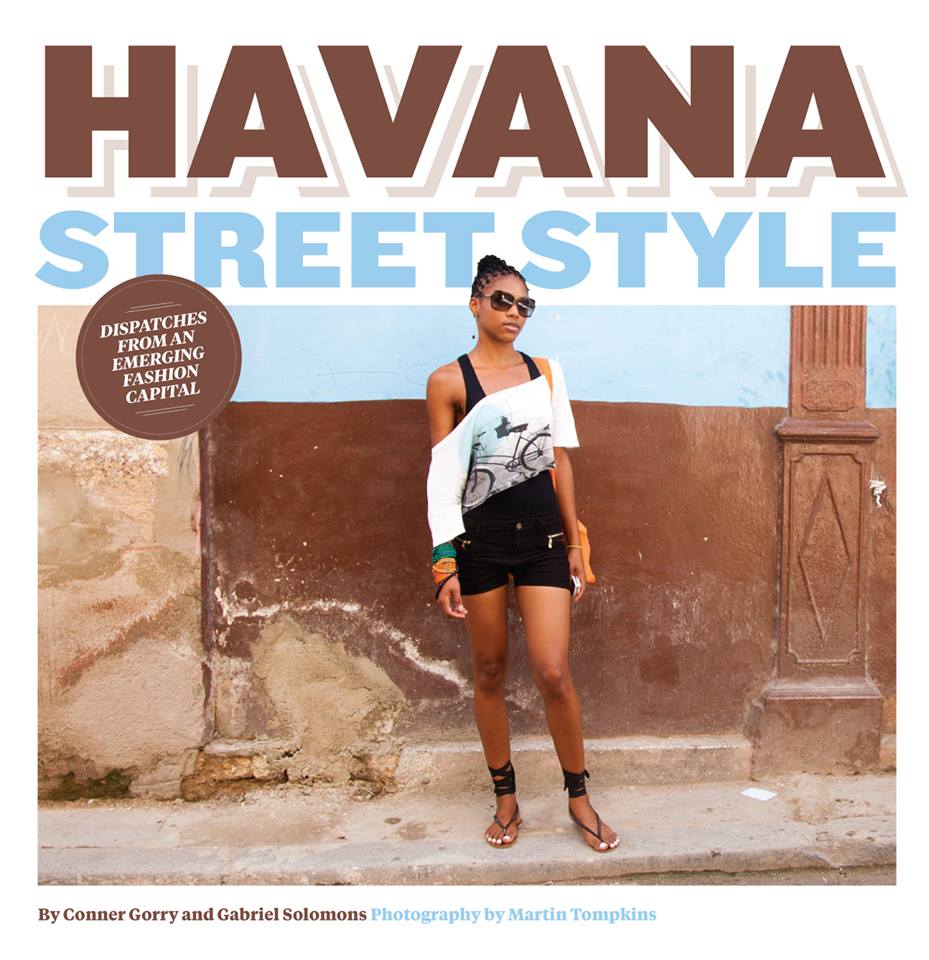[tweetmeme source=”connergo” only_single=false]
Up and moving to a foreign country is like tiptoeing across a tightrope without a net. It takes balls (or ovaries, as we say on this side of the Straits), but can be stupid, reckless, and if all goes horribly wrong, detrimental to breathing.
When I landed in Cuba to live full time – without a net – in April 2002, I had a pretty good idea of what I was in for (see note 1). But imagining 6-hour blackouts and bucket showers is one thing. Cooking, eating, reading and lovemaking by candlelight followed by a military shower is something (uncomfortably, unsustainably) else.
Little by little, things improved. Gradually, I adjusted. I sprang for a $15 electric shower unit (known as widow makers in some countries) and we kept a list of debate topics on hand for the next blackout. Over time, I grew accustomed to my neighbors dropping by unannounced for coffee and a chat and I no longer started at the good-natured yelling Cubans indulge in. Poco a poco my wardrobe got shorter and tighter, I perfected the use of a pressure cooker, and grew used to the idea that gladiolas aren’t just for dead people (see note 2).
But clothing, cooking, even floral tendencies, are differences you expect in foreign countries. In Pakistan I had to cover my head. In Guatemala I (happily) forsook bread for tortillas. Here in Havana however, I was blindsided by something else entirely, something wholly unexpected: I’m surrounded by old people.
It’s not simply that Cubans have a longer life expectancy than you (see note 3) or that the country has 1,488 centenarians and counting. Sure, the island is a willing poster child for the 120 Club (see note 4), but the ubiquity of the elderly here has more to do with the culture of aging than health indicators.
In Cuba, great pains are taken to keep the ‘senior zits’ and ‘blue hairs’ (as my mother calls them, even though – technically – she forms part of their ranks) actively involved in society. Active aging they call it. Every day, from Pinar del Río to Guantánamo, you’ll see seniors doing knee bends and loosening their rotator cuffs in free, outdoor exercise classes; raisin-like men mixing up the dominos at seniors’ centers; and great grandmothers wheeling their sweet potatoes and yucca away from the Tulipán vegetable market.
As end of days approach, it is the rare Cuban that gets parked in a nursing home. Here, people prefer to take care of their own, at home – even hospice happens at home, in your own bed. Up north, meanwhile, we tend to shutter people away once they reach a certain age. Where I’m from, growing old and dying at home is the rare exception. I get that nursing homes are handy. Who wants to change their mother’s diaper or go unrecognized by their own father as he battles demons known only to Alzheimer’s patients? But, the incontinent and impenetrable aside, I think the Cubans are on to something with their family-based aging in place.
Teresita was my first clue. Wide-hipped and curmudgeonly, with hair dyed the color of bread crusts, Teresita is my 86-year old neighbor. She’s the archetypical despotic Cuban matriarch, heading up four generations of females squeezed into a 2-bedroom apartment. Though able-bodied, Teresita never leaves the apartment. Despite her cranky, iron-fisted disposition, we call her “Terry” with affection.
Times are hard for Terry and her girls. She had to share her rubber-sheeted bed with her 56-year old daughter Lila until the latter emigrated to Tampa. It happened exactly like most leave-takings here in Cuba: here one day, gone the next. The space opened up in Terry’s bed couldn’t compensate for the sorrow it planted in her heart. With the high drama that grips so many Cuban women, Terry comes to me after Lila has left to say the only thing she has to look forward to now is the grave.
While her granddaughter is out earning her daily bread and her great granddaughter is at school learning her times tables, Terry is left alone. All day, every day. She’s locked in, but far from shut-in: perched at her window observing all the comings and goings, Terry is The Gossip. From her I learn a trio of young thugs are posing as public health inspectors, finessing their way into the homes of little old ladies, and robbing them blind. It’s Terry who tells me that Omara from upstairs in going to Spain and Yusi downstairs is dating a new guy.
“He’s black,” she whispers to me, passing a couple of fingers along her forearm – the classic Cuban sign for a person of color.
Like many white ladies of an age, Terry is a little bit racist, which is akin to being a little pregnant in my book, but I let it slide. She’s got over eight decades of memories and experience and I find myself heading across the hall to “talk story” as we say in Hawaii. I find reasons to knock on her door – bringing her the reading material she so desperately craves and dropping by for coffee and a turn in her broken cane rocker. Over tiny cups of sweet and musky bodega coffee (see note 5), she tells me about her brutal, pre-revolution childhood.
Rocking and sipping, she tells me how her father’s second wife, a wicked substitute for Terry’s dead mother, forced her to work beginning at an absurdly early age. There were the customary cooking and cleaning chores that every household has, but young Terry was also forced to take outside work, washing and ironing the neighbors’ guyaberas, slacks, and skirts. If she protested, she met the business end of a belt. She’s less forthcoming about her husband, who gave her one daughter and a whole lot of headaches. Of course, our conversation always detours to the terrain of her various ailments: stiff joints, failing eyes, and a chronic, inexplicable throbbing in her thigh. If I let her roam, we’ll get lost in the badlands of her aches and pains.
Then there’s Carmita, my 82-year old friend from Regla (see note 6). She’s more affectionate and sharp-witted than Teresita, but is a similarly iron-willed matriarch with a long gone husband. ‘Good riddance!’ she exclaims with a devlish smile. ‘That one was born unfaithful.’ Laying a liver-spotted hand on my leg she cracks jokes about macho men and criticizes complicit women in that spirited, pre-curve feminist way of hers.
Sipping the same sweet, musky coffee from the same teeny cups everyone has here, Carmita spins tales of teaching hicks from the sticks to read during the 1961 literacy campaign. With her eyes closed softly, she recreates the Bay of Pigs attack, reliving those tense days. Carmita can be mercurial, fluctuating between placcid and resigned, spunky and spent. Like Teresita – like everyone I’m realizing – her life has been peppered with profound pain and loss.
Carmita has her health problems too – arthritis forced her to abandon her sewing business some years ago and the diabetes is under control. For now. While she fries up some plantains for her handsome grandson, Carmita relates last night’s dream with that munificent smile of hers. In the dream, her recently deceased daughter has been revived, the cancer expunged, her lifeblood back.
“Give me a hug Mom.”
“It won’t hurt?”
“No, Mom. I’m good. I’m healthy.”
Her words hung in the small, dark kitchen.
“And then you woke up, though you never wanted to,” I say with finality.
“It was horrible muchacha.”
I can’t imagine.
Old Cuba likewise comes alive sitting on Evarina’s porch in Miramar. Homebound and 80-something, Evarina’s a bulldog of a dame. She’s from the Oriente originally, (which means something if you know the island), and once upon a time was a daily cigar smoker like myself. Her diabetes is having its way with her and there’s some concern she might lose her foot. While she tries to “resolve” a course of the Cuban wonder drug for diabetic foot, she passes her time burning up the phone lines gossiping about her sister’s new cleaning lady and the Braves’ acquisition of her favorite ball player.
Then there’s Mary and Esther. Debra and Julia. When I step back and look at the landscape of my life here in Havana, I’m shocked to realize that the people I like best, that are the most interesting and engaging, are, on average, 79 years old. Old women, the lot of them. Why, I ask myself, are there so many viejitas in my midst? Could this even happen in the States?
Gotta run. Carmita’s expecting me in Regla and has promised to tell me about when Hemingway was sweet on her, dropping by her work to flirt and conquer.
Notes
1. I had been here several times before, first as a volunteer in 1993 during the Special Period (which was very, very “special” according to the Cuban joke,) and most recently in 2000.
2. There are a couple of Cuban characteristics I will never get used to. Topping the list is the national penchant for spoiling movie endings. If you have Cuban friends, you know what I’m talking about. The other is eating pizza with a knife and fork.
3. Cubans’ life expectancy is 78.3 – just surpassing the US figure of 78. Meanwhile, 16% percent of the island’s population is over 60; this will shoot up to 25% by 2025. Cuba’s recently concluded national centenarian study is fascinating.
4. Fidel Castro is the Club’s most famous member.
5. The “bodega” is where Cubans receive their monthly rations – food and other staples provided almost free by the State. As I type this, the ration card is being phased out in one of the most radical departures for the Cuban government in recent memory (I’d hate to be the person who had to convince Fidel that cutting rations is a good idea). Last week, potatoes and dried peas were dropped from the ration card. Bread and coffee are next but won’t go as gently into that good night as papas and chicharro, I’m afraid. In Cuba, bread and coffee mean breakfast. Making people buy these staples is going to be tricky – especially coffee, which, like everywhere, is very expensive: we make one espresso pot a day, spending around $15 a month. Being that the average salary is $12 a month, we’ll soon be facing a national java jones unless other provisions are made.
6. Regla is known as the “Little Sierra Maestra” it’s that revolutionary. It’s also home to the Black Virgin of Regla (Havana Bay’s patron saint and closely linked with Yemayá) and many secrets great and small. You can drive to Regla in 10 minutes from downtown Havana, but cross the bay via ferry for a picturesque, enjoyable journey to what could be a small town in the island’s interior, with all the friendly faces and simple fun that implies.











Teresita, Carmita, Evarina…they sound like pistols. I have to wonder, however, about the old men. No doubt, I’m sure they’re not the gossiping yentas as their female counterparts. But I bet they’ve got a story or two to tell. Ever smoke a cigar and swap stories with the old gents?
Great post.
xox
WAM
Old men here come in two types: Dirty Ole Bastards or Jurassic Commies (what they call here “talibanes”)…..
KIDDING! (except the taliban part – that’s true)
I have a few 70+ male friends – they DO have stories too, of course, some quite fascinating (getting shot at Bay of Pigs, meeting with Fidel to negotiate revising atheist orientation of Cuban gov, treating TB babies in the remote mountains). Somehow, however, they don’t shoulder the sorrow and stories the way the women do….
As always, thanks for reading!
Fas-cin-a-ting! Great peek into Cuban life, I know nothing about Cuba, it’s great to read about the people and culture there. This was well-written and fun to read, as always.
Hola Annie. Thanks so much for the kudos and clicks!
Your posts are all so informative and fun to read. I will be in Havana (4th visit to Cuba) next week and I know I will still be shocked, astounded and in awe of the way of life, and the daily struggles and survival strategies of Cubans.
!Muchacha dichosa! (Lucky girl)! Coming to Cuba next week. I don’t know when you were last here, but changes ARE afoot:
1. El Sauce is HAPPENING. As is Pabellón Cuba, Cafe Teatro Bertol Brecht and Don Cangrejo
2. People are already bored of Yoani
3. Butterball turkeys are for sale at 24 CUC.
And you said it: the survival strategies are awe inspiring (for poor extranjeros/as too, not just Cubanos/as!)
Have a great trip.
As always, I love reading your blog. I’m sorry that life is so hard. I’d love to be able to send you some stuff. Its what I do for friends and ex-pats all over, it makes me feel like I’m taking part in something bigger. PLease keep writing, to me, its fascinating stuff!
Thanks, once again Jems, for your solidarity and for continuing to follow my adventures. Make no mistake: I have it WAY better than most Cubans. In one part of this post I even took editorial liberties to “soften” the hardship my favorite ladies experience here: Terry’s bed, that she shared with her daughter, wasn’t covered in a rubber sheet, but in plastic – like a cross between a Hefty lawnbag and that blue plastic sheeting they give to hurricane victims to cover their roofs. It made me so sad to see that.
Great post! I’m sorry to hear about the exclusion of coffee from ration cards. That is truly an awful, awful thing. Next time I come I’ll bring you guys some beans for sure!
Java junkies unite! Note: the RUMOR is that coffee is going to be cut, but everyone agrees that might have disatrous consequences!
Thanks for the good read. This person obviously has a good grasp of the situation there in Cuba except for this part:
Quote:
Here, people prefer to take care of their own, at home – even hospice happens at home, in your own bed. Up north, meanwhile, we tend to shutter people away once they reach a certain age.
Don’t think for an instant that most Cubans wouldn’t like a little assistance from the government for their aged family members in need of medical or self-care. I know first hand several families that would love to get some relief of the burden of caring for family members with cancer, bladder problems, senility, etc.
Hola Rick. I think we’re BOTH right: people prefer to care for their elderly family members at home AND would like more govt help in doing that in a safe, healthy, and humane way. I know the gov pays for family members to care for disabled family members at home, but don’t know if that extends to the elderly? Anyone know?
Very nice article thank you for this post. Old people must be cared because without them we can’t exist on this world.
You have “the angel”, you have got the Cuban escence in your chronicles. Thank you!!!!
Thanks to you, dear reader! Comments like these keep me going. Gracias!
Stumbled upon your blog via LP twitter – love it! I’ve always been fascinated with Cuba – thanks for sharing.
Thanks for reading!
I stumbled upon your blog looking for a recipe for cuban chicharros.
As a “foreigner “married to a Cuban I lived a long time in Cuba and the way you describe it is SO true.
The marriage did not last but I still have friends there. They are always in need of everything we concider daily stuff: like bedsheets, diapers, pencils.. You name it… and still they are the friendliest and most optimistic people I ever met.
Thank you for sharing !
Hiya Anne. Thanks for joining the conversation. and yes, the most optimistic and fun and friendliest. As a new friend told me last week: we’re so screwed as it is, we might as well have fun in the meantime. So true.
Ive thought of a blog post about the lists (and lists and lists) of things to buy that all of us that have the chance to get off the island keep. Once off we SHOP LIKE MAD. Makes our family nuts – especially when shoe shopping for neighbors, complete with drawings of their feet, is involved.
Cheers!
Pingback: TBEX Community Keynote Links | nerd's eye view
Wow, nice post, thanks! I enjoyed reading it, you made feel I’m there. Say “Hi!” to all your neighbors.
Gracias a ti VLCL.
This is the kind of very simple comment that helps me keep on keeping on – if I can make readers feel like they’re there, I must be doing something right.
Really fabulous post, Conner, on so many levels. I’m not even sure where to start.
Perhaps it suffices to say that you make me want to visit Cuba as soon as possible, and meet these women. And you!
Gracias!
Thanks to several friends doing something similar in NY & LA, Im going to launch my Havana dinner parties for women this summer. Once a month (?) Im going to invite half a dozen interesting women (who don’t know each other) over to chow down and sound off. I’ll put you on the short list!
Pingback: Cuban Thanksgiving Starring Pavo Butterball « Here is Havana
Hi Conner,
I love your blogs, and await anxiously for them to arrive in my email. I have been to Cuba and my boyfriend is Cuban (I am Canadian, but we live in Mexico)
I feel like I am back in Cuba and my boyfriend loves to hear what is going on back in Cuba thanks to your words. Great job! Thanks so much.
Next time we head down to Cuba I will let you know so we can take you some goodies.
Shar
Hola Shar and thanks for chiming in! I wish I had more time to write about what’s happening over here in our world – there are so many things Im ready and anxious (read: excited) to write about but don’t have the time. Day job and all that. Thankfully my day job (reporting on Cuban health system) is very intriguing!!
What part of mexico are you in?
Hola to the heyvito!!
I loved this story of staunch (as we say in New Zealand/Aotearoa) older women. My mum who is 94 and living at home with lots of support also enjoyed hearing about Teresita, Carmita and Evarina. She visited Cuba in the winter of 1947/48 with a New Zealand trade delegation and has a soft spot for Cuba and its people. I have a great photo of her hanging out in one of the bars located near the Museo de la Revolucion. A friend and I are going to Cuba in December. Any chance of meeting up?
hey Lindy. Thanks for reading and sharing (especially with Mom! Love the viejitas!) Im currently on assignment (with little internet and hence the delay in responding) so probably won’t be able to meet up. But you’ll have a blast – December is a great time to be in havana. happy trails!
Pingback: I Got the Cuba in Me | Here is Havana
Pingback: In the Mix: Café Cubano | Here is Havana
Pingback: Cuba: Going to the Dogs? | Here is Havana
Pingback: Cuba Contradictory | Here is Havana
Are music cd’s of any interest? Would I be allowed to bring them?
Should I bring my own coffee???
ta,
karen in Canada
Hola Karen. Cubans love their music and anything new (eg Plant & Krall, Lady Gaga, Adele, the new Etta James, RIP) will be welcomed, but this isnt like the old days when people would approach me on the street and shyly ask if I could leave any cassette tapes (in the REAL old days) or CDs behind. Cubans are super tech savvy and most folks today are strictly MP3/4 and ipod. Still – bring Cds, leave them with nice people. They’ll appreciate it, you’ll feel good. Allowed? Why wouldn’t they be??
Cuba is renowned for its coffee, specifically cafecitos and cortados (which Im drinking right now!). You’ll likely want to be taking cuban coffee OUT not bringing coffee in.
HAve a great trip
Pingback: Havana Vice: Titimanía | Here is Havana